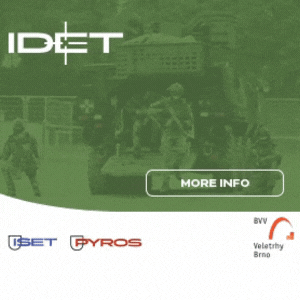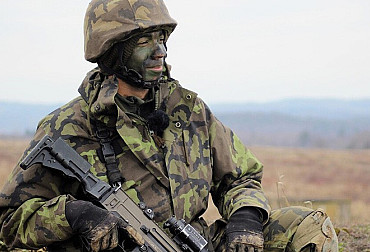4th Rapid Deployment Brigade: Where others fall short - the vision of modern warfare
This year, the 4th Rapid Deployment Brigade "Defence of the Nation" celebrates its 30th anniversary. The brigade was established on 1 July 1994, had ten units and until 2003 had its headquarters in Havlíčkův Brod. After the reorganization in 2003, the command was moved to Žatec and the number of units was reduced. Today the brigade includes the 41st and 42nd Mechanized Battalions and the 44th Light Motorised Battalion. The brigade has participated in many foreign operations, including missions in Bosnia, Albania, Macedonia, Kosovo, Kuwait, Iraq, Afghanistan, Lithuania, Latvia and Mali. As part of the modernization and reorganization efforts of the Czech Army, the 4th Rapid Deployment Brigade was integrated into the Rapid Reaction Force. Its main tasks include combat operations, population protection, disaster relief and participation in NATO and UN international operations. The brigade is strategically subordinated to the Ground Forces of the Czech Armed Forces. Soldiers of the brigade are regularly deployed within NATO, most recently in operations in Slovakia. The current Commander of the 4th Rapid Deployment Brigade is Brigadier General Jiří Líbal. In connection with the anniversary of the brigade, our editorial staff accepted an invitation to Žatec, the headquarters of the brigade and the 41st Mechanized Battalion, where we were introduced to selected expertise and capabilities of the brigade.
Video: 4th Rapid Deployment Brigade: Where others fall short or the vision of modern warfare / CZ DEFENCE
The 4th Rapid Deployment Brigade (4th RDB) has an extensive range of capabilities and expertise, which enables this manoeuvre element to effectively perform a wide range of tactical tasks in both peacetime and wartime conditions, and provides a key role within the Czech Army and in international operations. During our visit, the selected competencies and capabilities of the 4th RDB were personally presented to us, including dynamic demonstrations by Chief Warrant Officer of the 4th Brigade Master Warrant Officer Michal Baka.
Reconnaissance platoons
The reconnaissance platoon is organizationally integrated into the headquarters company and reports directly to the battalion commander. The main task of the reconnaissance platoon is to obtain information that serves to assess the battle area and subsequently as a basis for the decision-making process of the battalion commander. It is the battalion's reconnaissance organ, designed to conduct reconnaissance in the enemy's formation and in its own formation, by observation from the ground or while moving. It performs its tasks on foot, on Pandur II 8x8 vehicles or in combination. They then conduct reconnaissance from advantageous observation posts in the vicinity of assessed areas of anticipated enemy activity. It may use traps and ambushes to perform reconnaissance tasks. A reconnaissance platoon may operate independently or may be part of a unit conducting a raid or reconnaissance by combat.

Sniper group
Snipers of the 4th Rapid Deployment Brigade operate in every battalion, every manoeuvre element. They have their own sniper group everywhere. The team usually consists of three soldiers - two riflemen and an observer. "The two gunners can concentrate purely on shooting, the third - the observer - communicates all the conditions for shooting. He also knows which type of rifle should fire at the enemy's position," one of the team members, Warrant Officer M.R., told our editorial team during the training. These include the strength of the wind, the distance to the target or the direction and speed of any movement of the target. He also takes care of correcting all the specified elements of the shooting and also ensures communication with the superior element. The shooters can then fire simultaneously or on a countdown, or fire a correction shot to eliminate the target 100 percent. The location of the shooters is important, as it depends on the specific task and the surrounding terrain. The observer also decides on the choice of firing position following the pattern of "seeing and not being seen". Moving as quietly as possible, communicating as a team and being perfectly camouflaged from the enemy is still a prerequisite for successful sniper work. Riflemen then shoot at a distance of 800 to 1 000 metres.
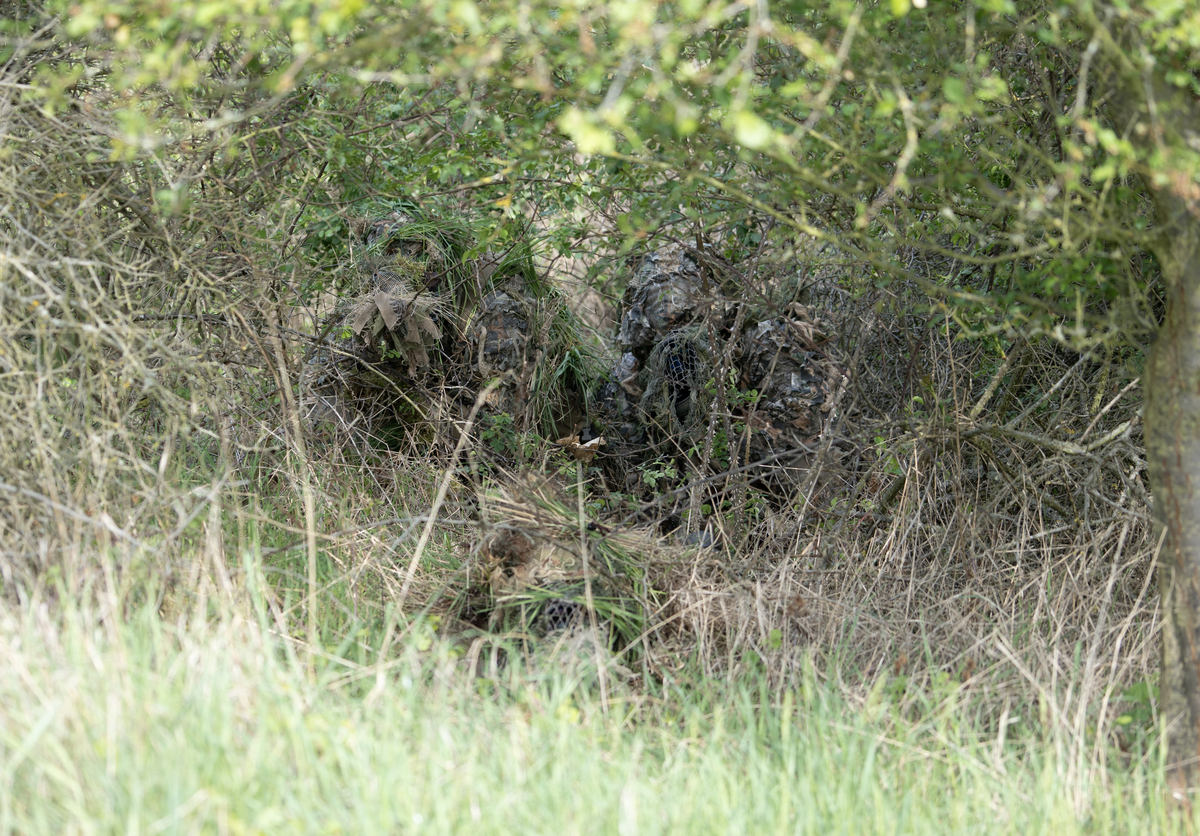
It may come as a surprise to some, but the main activity of a sniper is observation rather than actual shooting. It is the observation and knowledge of the environment that decides on the elimination of a particular target, whether it is a soldier, military equipment or another target. To perform these tasks, snipers have at their disposal appropriate weapons, ranging from 7.62 mm to 12.7 mm caliber. Targets to be eliminated include, but are not limited to, vehicles or communication nodes, radars or ammunition storage sites. A rifleman moving in the field carries a rifle weighing approximately 12 kilograms, plus 10-15 kilograms of ammunition (depending on the type of weapons he carries), and must carry the various additional devices he needs to accomplish the task. Also for these reasons, a group of snipers is then assembled that is able to divide these things among themselves.
A separate chapter is camouflage. Soldiers work with different types, namely lighter ones when the group is on the move or heavy ones. Heavy camouflage is used by the soldier when he is deployed for two to five days in one place. He then prepares his position and digs in so that he is not only unobservable from the ground, but also, for example, to an enemy drone that searches for its targets not only visually but also through thermal imaging. For this type of camouflage, the soldiers have 3D tarpaulins that cover the entire team while reducing the heat signature as much as possible. During brigade exercises, drones are often used to just expose the various risks and shortcomings of the sniper team while performing the task.
C4ISTAR
The unmanned aerial vehicles that are massively deployed on contemporary battlefields are also available to the C4ISTAR (Command, Control, Communications, Computers, Intelligence, Surveillance, Target Acquisition, and Reconnaissance) specialists that the 4th Armoured Brigade has in its structure. They are integrated directly within the mechanized companies of each platoon. "They increase the technological superiority on the battlefield in the surveillance system and also in all the processes that take place on the battlefield," describes the importance of the C4ISTAR specialists Master Warrant Officer Michal Baka. C4ISTAR capabilities serve not only as support to snipers and reconnaissance or mechanized teams of 4th Armoured Forces, but it is a comprehensive approach used in military operations to effectively manage and coordinate various aspects of combat operations. As such, the system monitors and coordinates the activities of various units in action. Specialists have access to information transmission systems and technologies, radio, satellite and other communication channels that enable rapid and reliable real-time information exchange. Their equipment includes computers, information technologies and systems (software applications, databases, network infrastructure) that enhance situational awareness and support decision-making and operations management.

A unit operating on the battlefield collects data, analyses information about the enemy, and passes it on for further evaluation. C4ISTAR specialists are a relatively new modern element on the battlefield. Their presence enhances the ability to react quickly to changes on the battlefield, facilitates decision-making processes and overall increases the effectiveness of military operations.
This is matched by their equipment: portable and vehicular radio stations for voice and data communications, satellite communications systems for long distances, LAN/WAN networks for the transmission of large volumes of data, laptops, tablets and servers for the management of operations, including software and applications for planning, monitoring and controlling operations (e.g. BMS - Battle Management System), unmanned aerial vehicles, radars, acoustic sensors, thermal imaging cameras and other information gathering equipment, systems for intercepting and analysing enemy signals and communications, and other equipment.
Military equipment
The 4th Armoured Division has various types of vehicles within its equipment. The mortar platoons of the brigade work with the Tatra 815-7 8×8 PRAM vehicle with 120mm mortar model 82. The mechanized squad operates seven versions of the Pandur II 8x8 vehicle. The equipment also includes an Iveco 4x4 50 B light armoured vehicle.
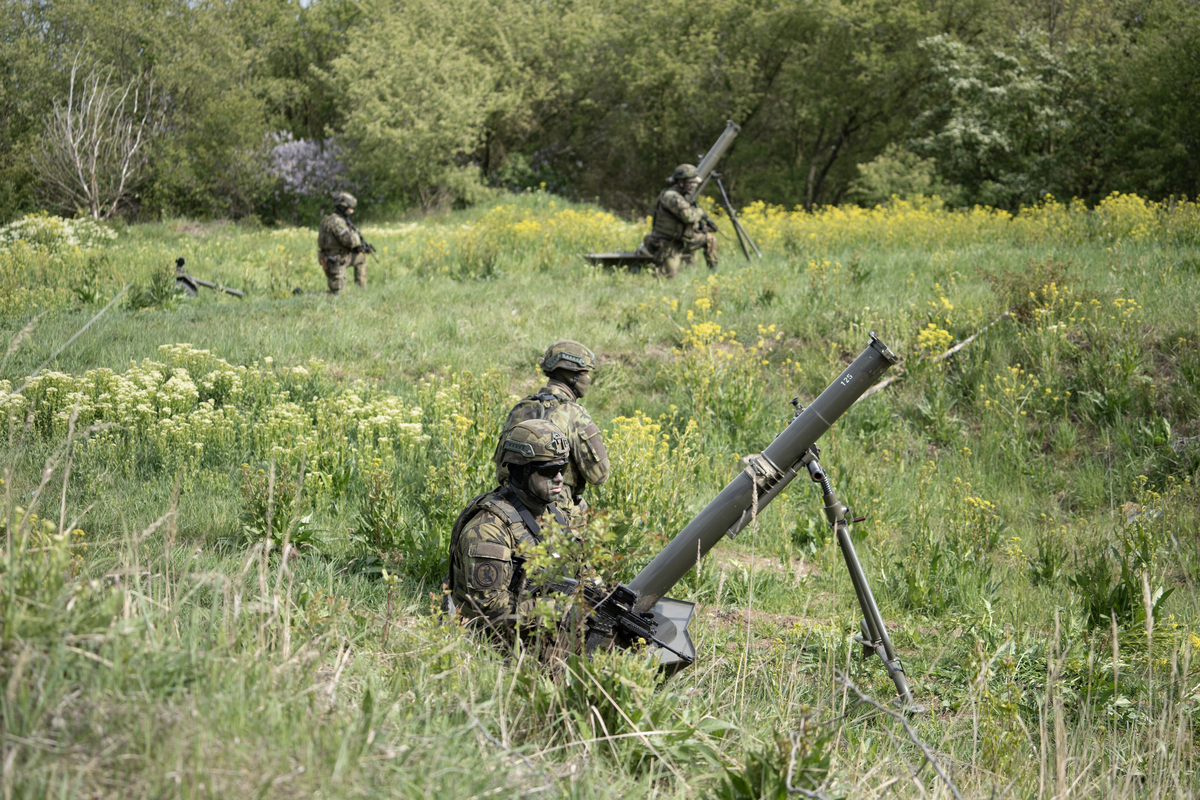
The versions using the Pandur II 8x8 chassis are the main combat force of the 4th RDB. According to the tactical use of these vehicles, they perform more fire support tasks, as the three-man crews of these vehicles skillfully use the distance from the enemy as an imaginary protective shield and the accuracy of the unmanned turret provides more than sufficient advantage when firing at long distances. The vehicles are supplemented by infantry elements, which usually act as imaginary antennae, seeking the enemy's position. The vehicles and dismounted elements of the Iveco platform function in a similar way, but with logical differences.
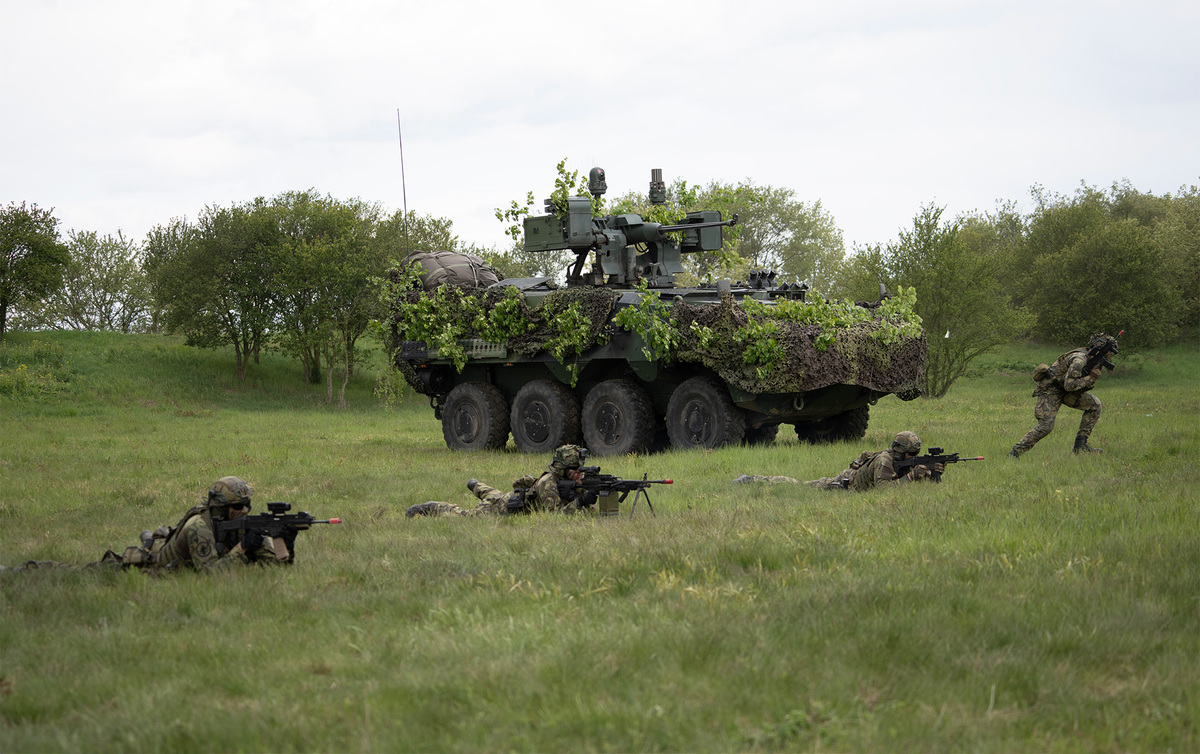
The fire support units, i.e. mortar batteries, use a Tatra 815-7 8x8 PRAM chassis for transporting their four-man teams, with a Model 82 mortar mounted on the vehicle's load platform. After capturing the vehicle to the firing position, the operator must place the mortar in firing position as quickly as possible and be ready to perform firing tasks. Upon completion of these tasks, which may vary in the type of ammunition used, the operator shall then load the mortar and leave the firing position area as soon as possible.
CQB
Part of the 4th Brigade's capability is the skill of CQB (Close Quarters Battle) operations, which are characterized primarily in urban and confined spaces where units move in close proximity to the enemy. CQB involves special techniques, equipment, and tactics that allow for effective combat in urbanized areas, where Soldiers practice various methods of entering a room or facility, such as dynamic entry (rapid and forcible entry), silent entry (stealthy and inconspicuous entry), and combination techniques. The team often uses special equipment such as battering rams, explosive charges, or missiles to open doors. Team members move to cover each other and minimize the risk of being hit. They move quickly, decisively and with the aid of signals. They also use trained dogs to assist them. "The 4th Rapid Deployment Brigade has its own unit of handlers, which it actively incorporates into training. It is not purely a guard duty, but it is also about using handlers to carry out offensive and defensive activities within the brigade," explains Master Warrant Officer Baka. On the spot, during a demonstration exercise, we are personally convinced that CQB is a truly demanding form of combat, the successful execution of which often has a decisive influence on the outcome of military or police actions in an urban environment.
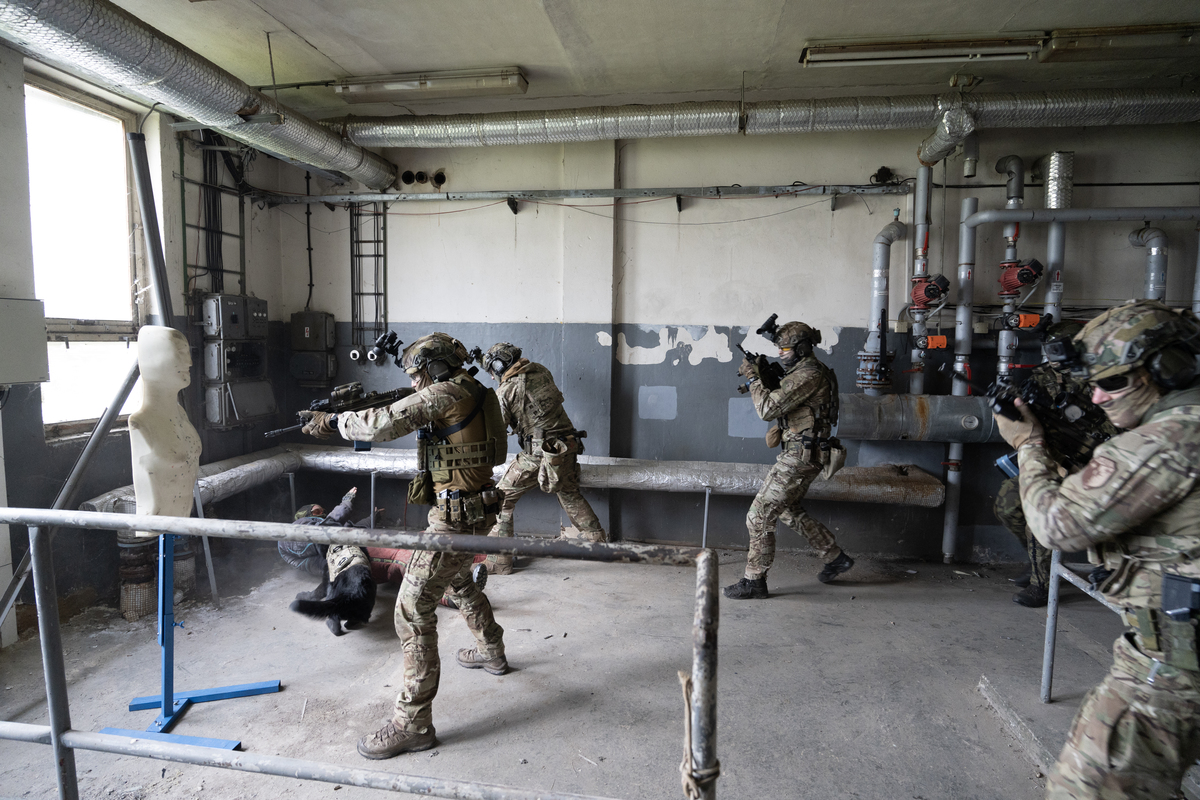
Return to the all-military character
The 4th Rapid Deployment Brigade is responding to recent changes on the battlefield. It is, among other things, a return to an all-military character. "With the capabilities we need as a manoeuvre element on the battlefield, we are returning to where we were. It's a perfectly logical step. The Global War on Terror required different capabilities. We need to respond to what is happening on the battlefield and we need to be prepared today for what we will face in the future. Therefore, increasing our capabilities and moving the brigade more into a separate developmental element is a logical outcome of what is happening on the modern battlefield today," said Chief Warrant Officer of the 4th Brigade Michal Baka.
Joint training with other allied units is also an important element. "Training is the alpha omega for any soldier or member of the 4th Brigade. We grew up on training, we are fattened by training. The mentality of a soldier of the "Four" is that he would rather be in the woods than sit in the barracks," Michal Baka confirms, adding that there is a huge difference in cooperating with someone or integrating someone into your own line-up. "As we can see, cooperation with partners is fine, but the more capabilities we need to get on the battlefield, the deeper the integration of units and the deeper the cooperation must be, even at the lowest tactical levels. And that's not going to happen on its own. We can't remain in a haze of figuring it out. We need to verify the procedures in practice at the lowest level," explains Master Warrant Officer Baka. An example is a recent exercise in Germany in which German engineers transported a Czech mechanized or mortar team across the Labe River.
The role of the chief warrant officer
The importance of the role of the chief warrant officer is becoming increasingly apparent in the functioning of the brigade. We ask Chief Warrant Officer 4 about his tasks, not only at the highest level in the brigade but also in the lower units. "I try to carry out my activities in such a way as to support and clarify the intention of my commander as much as possible and thus be his right hand for working with the Silver Corps, whether it is the warrant officer or the NCOs or the men, or I act wherever it is necessary to clarify the commander's intention or protect it from possible misunderstanding. That this is a key role is clearly demonstrated because in any army the Silver Corps is the backbone and the driving force of the army. For these reasons, the preparation, education and training of the Silver Corps must not be underestimated. After all, you can see the technology boom today for yourself - from telephones, to C4ISTAR elements, to modern weaponry. Technology is moving on to a whole new place. To think that you can raise an all-round soldier in three months in a basic training course just doesn't apply today. A commander is overwhelmed with his tasks. So the fact that he's got a functioning apparatus here to provide for the preparation and training of an individual is, I think, a huge benefit. And it's only good that the role of the chief warrant officer in our Army is building, and even after 15 years of existence, it's moving further and further and we're deepening the relationship between the officer and warrant officer corps."
The 4th Rapid Deployment Brigade also has its Hall of Traditions, where you can learn about the long history of the 4th Brigade, including the various foreign missions in which members of the brigade have served, through various artifacts on display. Together with the military chaplain of the 4th RDB Captain Pavel Brichta, we visited the chapel, which is part of the brigade and which is dedicated to the Archangel Michael (who is a symbol of the fight of good against evil). It is necessary to remember that a soldier of the Army of the Czech Republic swears that he will sacrifice his life for his country, which unfortunately sometimes actually happens, and so it is a form of respect and gratitude to constantly remember those, who gave their lives for our country. "The names of our brothers who are on the wall of heroes prove just that, that they fulfilled the words of the military oath to the fullest. Either in defence or in training, they gave their lives, that is, the most precious thing they had. When we welcome new recruits to the Fourth Brigade, we tell them what it's all about. And we always show them the names here. Our service is not safe, and you're not guaranteed to always come home to your loved ones. It's actually kind of a memento for the recruits to think and reflect on what they signed up for and what they swore an oath to do," said Capt. Brichta.
Evaluation of the Commander of the 4th Rapid Deployment Brigade
The 30-year development of the 4th RDB was then assessed by its commander, Brigadier General Jiří Líbal, as very dynamic. According to him, the brigade has always been the first - whether it is deployment in missions in 1995, 1996 or even in the transition to new equipment. "Sometime around 2007-2008, we started with Pandurs. Again, we shifted because we were the first ground forces unit to be modernized in some major way," says General Líbal, adding that the same is true with the brigade's return to an all-military character. According to him, it is a return to 2003, when the battalions of support and combat support forces, including artillery, were separated from the brigade, leaving the brigade with four battalions. "And now we are also being shown, according to NATO documents, what the brigade should look like. Everywhere it says it has its organic artillery, organic chemists, organic components, which we don't have. We have that in the brigade task forces, whether it is the fourth or the seventh. Of course, we have those units available from the other regiments, but I personally don't think it's enough, I think we should have our own," says the Commander of the 4th Brigade.
The situation is similar with the fourth battalion. What was originally the 43rd Airborne Battalion is now a separate airborne regiment, so today the 4th RDB has only three battalions (41st Mechanized Battalion, 42nd Mechanized Battalion and 44th Light Motorised Battalion). However, the replenishment of the brigade to four battalions is envisaged. "You can read that in the KVAČR, where it says that by about 2040 we should have a four battalion. That means it will take some time to build up. It will take about ten years to build such a battalion, because a crew will have to be selected and equipment will have to be purchased. Those people will have to be trained. So if in 2040 we are supposed to have four battalions, and those battalions are supposed to be ready, then realistically we are talking about 2030," General Líbal calculates.
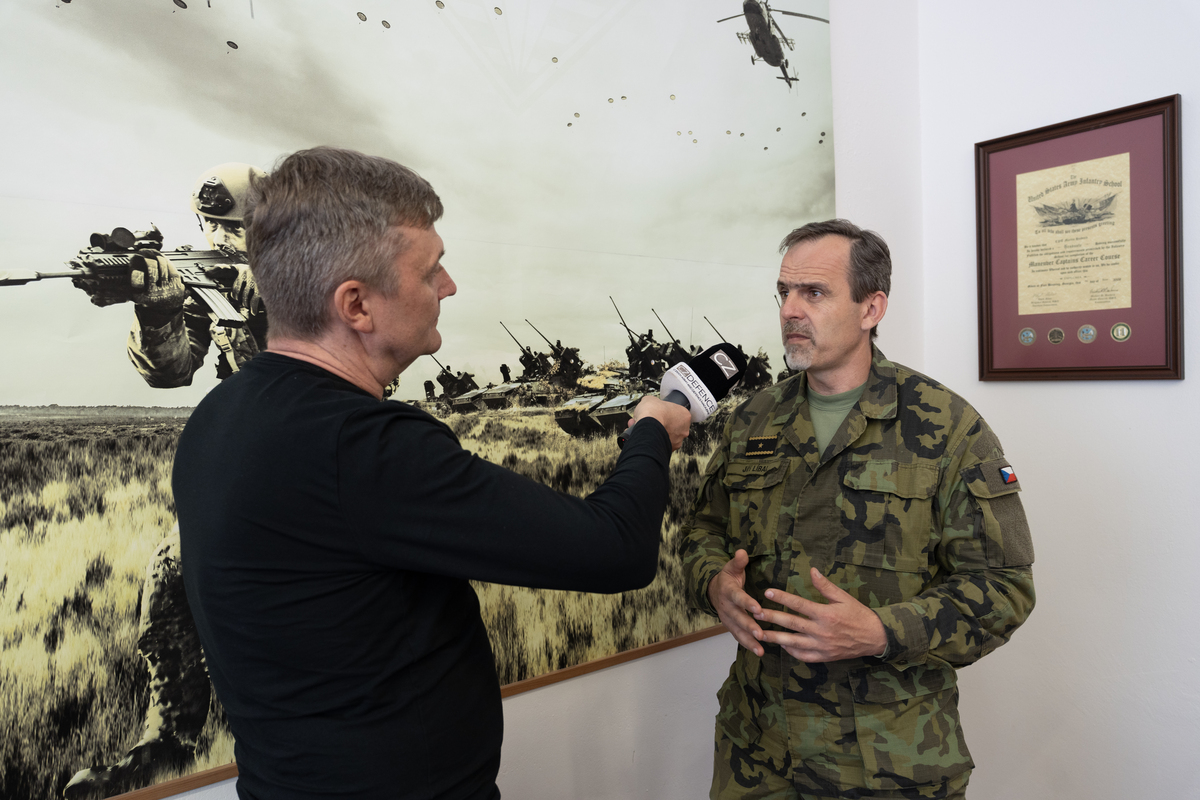
The next task for the brigade's modernisation is to add the Pandur KBVP, not only for the 44th Motorised Light Battalion, which now has only Iveco vehicles. "If you look at the KVACR, you see that the Pandurs are past half-life and are due for modernisation. Because of the 43 Airborne Battalion being taken away from us, as a brigade we are now supposed to have three battalions to qualify as a medium brigade. But those battalions have to be equally equipped, which the 44th Light Battalion is not. It's gonna need pandoras. We anticipate that process could begin within two or three years. Alongside this, there will certainly be an upgrade of the existing pandurs. They have been with the brigade since about 2008, which is a number of years. Also, the radios and other equipment are past their prime and need to be upgraded," says the Commander of the 4th Brigade.
General Líbal, among other things, was at the birth of the methodology and tactics of Pandur II 8x8 CZ wheeled armoured vehicles within the Czech Army, so we were interested in what role this armoured vehicle plays on the modern battlefield today and whether the current tactics of its deployment have changed in any way. We were also interested in how the protection of the vehicle against unmanned aerial vehicles, which are widely deployed on the Ukrainian battlefield, is addressed. According to General Líbal, the deployment of the vehicles has not changed dramatically. "We, as a medium-type brigade, fight as infantry. The soldiers are fighting, and the vehicles are supporting them from somewhere in the rear from concealment," the general says, adding that there is no difference between offense and defense as basic types of operations. After all, this is how both sides operate on the Ukrainian battlefield. "They are trying to push the infantry forward, and the vehicles are somewhere two, three, four kilometers behind the line because of the threat of drone attack. A large vehicle like that - whether it's a tank, a Pandur or whatever - is easier to find and therefore easier to destroy. On the other hand, vehicles or tanks have some sort of resilience, firepower, so they can get infantry onto that battlefield quickly, or they can disappear quickly or provide fire support from cover. I will add that the heavy brigade fights primarily with vehicles and the infantry supports them. We have it exactly the other way around. So when it comes to tactical use, there is no fundamental change," says the Commander of the 4th Brigade.
General Líbal considers the current protection of vehicles against drone attacks to be insufficient. "We need to modernise the vehicles. If the vehicle was introduced in 2008, where there were some conditions and some weapon systems, then 16 years have passed since then. The way of warfare and technology is evolving. At that time, we might not have even dreamt of drones," says the Commander of the 4th brigade, adding that the need to modernise the Pandurs is all the more necessary. And it's not just about drone protection, it's also about increasing armour and changing the weapon station. The latter could remain as manned, but should be better protected against drone attacks.
Also in the case of the 4th Rapid Deployment Brigade, the soldier is the foundation. That is why we asked how satisfied the 4th Brigade is with the level of recruitment. "As far as people are concerned, they are fine, but there are not enough of them. In order to be combat-ready, the classic standard is ninety percent manning, and no unit in the Czech army currently has that. We are quite a bit below that. I am satisfied with the quality, let's say, but not with the number of soldiers," General Líbal said. In the case of the 4th Brigade, it can be said that it is an interesting employer, where, especially in areas with a higher level of unemployment, it can offer varied and professional work with advanced technologies.
We also asked General Líbal to assess the role of the Chief Warrant Officer in the 4th Brigade, including his role as a communicator between the team and the officers. "I am very comfortable with that role because I was there at the beginning, around 2003. That was when the institution of chief warrant officer was being introduced into the army. At that time, perhaps it wasn't even called chief warrant officer yet. He was a senior instructor, a commander's specialist. At that time, I was working just at the British Military Training Team in Vyškov, where I interacted with sergeants on a daily basis. There I understood the role not only of the chief warrant officer of the brigade, but also the role of warrant officers at other levels, just representatives of the silver variety of people in the army. I have always upheld the role of the Chief Warrant Officer, and I am satisfied with his actions. I certainly use him, and he does his role very well," said Brigadier General Jiří Líbal.
The 30th anniversary of the establishment of the 4th Rapid Deployment Brigade brings with it not only a look back at its dynamic development, but also an opportunity to outline future goals and visions. "I wish we could keep quality people who want to pull it forward, which is always the basis. We need to move forward. We need to keep an eye on what's happening in the world. I wish we could get new equipment as soon as possible because that always gets the troops pumped up. It doesn't have to be new vehicles, it can be just ordinary drones, standby ammunition, quad bikes, something for scouts or something similar for snipers," concludes the Commander of the 4th RDB Brigadier General Jiří Líbal.






